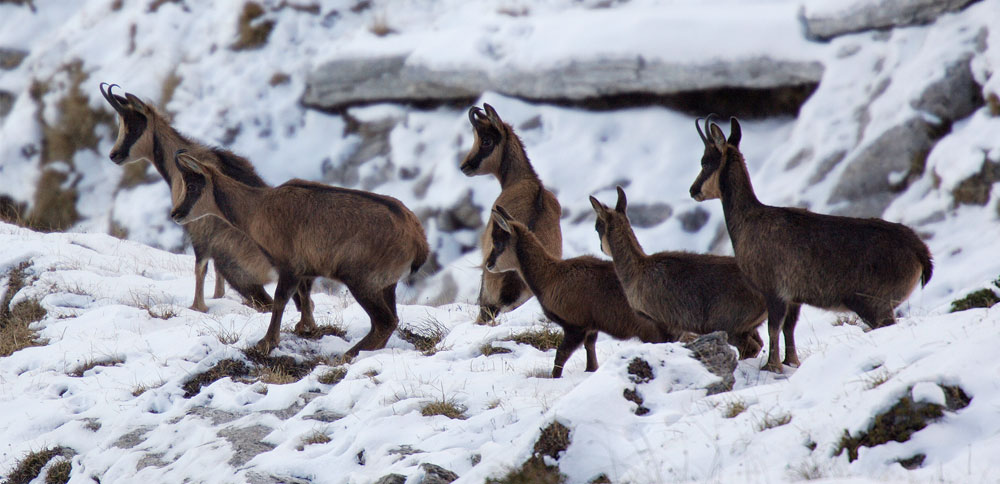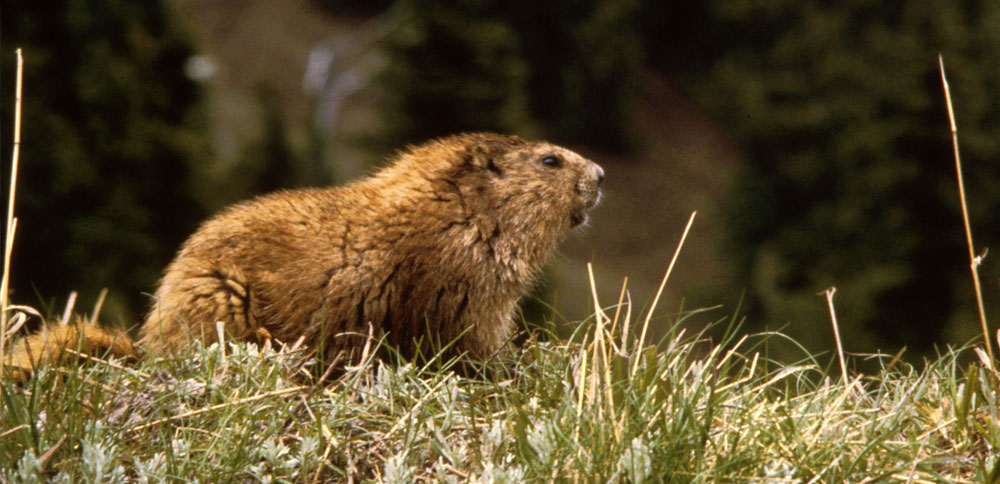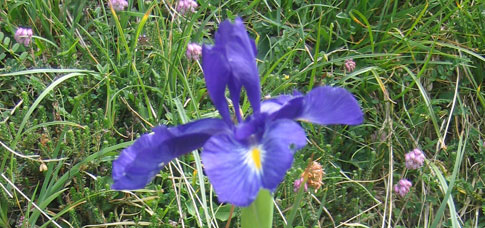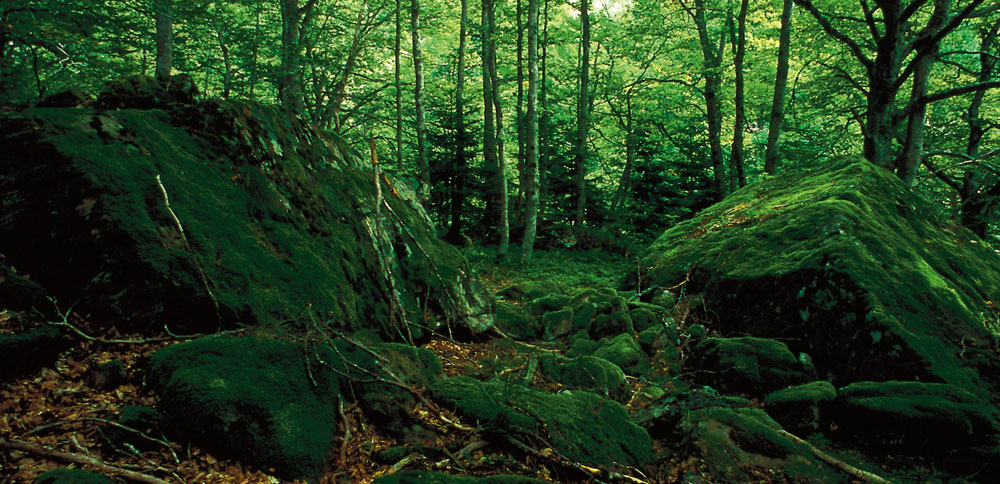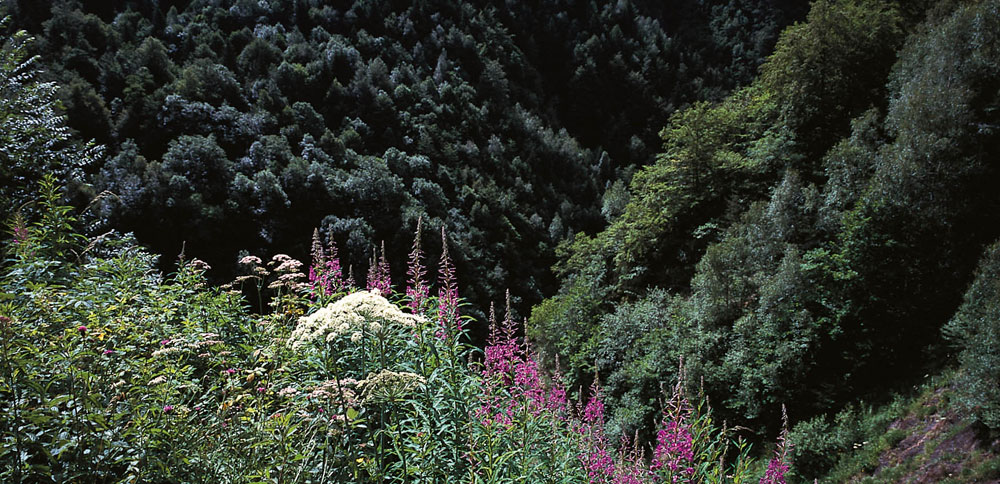When nature looks out your lodgin’s door
The intense nature of the Valley, with deciduous and coniferous forests alternating with alpine and subalpine meadows and beautiful fluvial stretches or lakes, can be found on every step taken and simply by opening the door where the visitor is staying. The course of the Garona River is the essential structure of the main valley and its tributaries provide not only its waters, but also other side valleys that justify its name: Val d’Aran (Valley of Valleys).
Its orientation towards the north, with an orography of tall mountains, and its Atlantic climate, in spite of being a Mediterranean country, provide the valley with a precipitation index much higher than the average rate in other Pyrenean regions and in the Iberian Peninsula. This makes possible for the valley to host ecosystems with especially good features for some species of great interest such as the Brown bear, a big variety of micro-mammals, the threatened freshwater Sculpin and even the Bearded vulture.
Botany lovers can find in Val d’Aran some of the most beautiful and difficult to locate alpine flowers, such as the Nigritella orchid, in the Mulheres area of the valley; some of a high therapeutic value, such as the Arnica Montana, can be found in several areas around Colomès; apart from exotic carnivorous flowers like the ‘Drosera’ (in subalpine meadows) or the ‘Viola d’Aigua’ (Water violet) – in clearer water courses. Microscopic vegetable communities, which are real endemisms, can also be located in certain glacial lakes of the d’Aigüestortes National Park environment; they have been subject of scientific studies for years.
Different varieties of moss and ferns which require high levels of oxygen and environmental quality show the high ecological value of the Aranese forests and beautify even further the impressive firs (Abies alba), beeches (Fagus sylvatica) or oak trees (Quercus robur) that accompany the endless flow of the waters of the Valley rivers. The degree of humidity and the geomorphological characteristics of Aran also make possible that its forests can often surprise the visitor with the presence of a bush as beautiful and as threatened like the popular holly (Ilex aquifolium). Its use as decoration at Christmas festivities made it essential to protect it in all the alpine regions.
Insects also have a key role in the rich ecosystem of the Valley, not only because they are a plentiful source of food for other species situated in a higher trophic level in the ecological pyramid (such as birds and many micro-mammals), but also because of their decomposing role in the subsoil and their beauty as well. Apart from a big number of butterflies of great beauty, an endemic insect stands out known as the Rosalia longicorn. Its name doesn’t make you think about its transforming power of dead beech and birch wood in older forests. We also find endemisms among reptiles which show the richness of the biodiversity of Aran such as the Aranese wall lizard (Lagocerta aranensis) or the Pyrenean newt (Calotriton asper) which lives in the cold waters of the higher parts of the river.
The Bearded bird (Gypaetus barbatus) lives in the subalpine meadows and rocky walls of Mijaran and Baish Aran, in the surroundings of the Victoria and Margalida mines, due to the ferric waters and the abundance of ungulates. Its flight in circles can surprise the visitor along the road that ascends to Arres making it possible to easily see the intense orange colour of its chest. It gets its colour from bathing its feathers in the waters dyed by the metals. Other big birds of prey such as the majestic Golden eagle (Aquila chrysaetos), the seasonal Black kite (Milvus migrans), Red kite (Milvus milvus) or the Egyptian vulture (Neophron percnopterus) are easy to see in their circular flight in search of prey or carrion.
To observe the agile goshawk (Accipiter gentilis) defying the tree branches while flying among the deciduous forests is more difficult as well as observing the hiding woodcock (Scolopax rusticola) amongst the fresh firs. To watch the mythic Middle Spotted woodpecker, whose colours and noise drilling a hole in the trees can probably be confused with other woodpeckers not as endangered, requires more patience and good binoculars. The large amount of small forest birds gathered in Val d’Aran, thanks to their warbling, turn the trekking routes into a beautiful acoustic adventure, not only for ornithology lovers but also for anyone else.
Each of the seasons has its own charm in the Valley and different flora and fauna species can be observed depending on the migration of the birds, the hibernation of some mammals or the blossoming of plants. In summer, the visitor can be surprised by a flirty marmot (Marmota marmota) observing them hidden behind a rock in the alpine fields. In the early spring, the visitor will discover the presence of numerous mammals due to their footprints in the last snowfalls. In autumn, it is possible to come across a pack of big male Red deer (Cervus elaphus), with their horns fully developed, in the midst of their bellows. In winter, the visitor can be lucky enough to observe the walk of the greatly threatened Rock ptarmigan (Lagopus muta) from the top of one of the ski lifts of Baqueira, Beret or Bonaigua. The best option is to always make the excursion or field trip with some of the specialized guides of the Valley. They will know how to adapt the route to the demands and physical condition of the visitor, carry useful equipment such as binoculars or zoom lenses, and know where, when and how to observe each species.
Fauna
Brown bear
The Brown bear (Ursus arctos) finds its favourite place in the forests of Baish Aran in the Central Pyrenees; its footprints or five claws scratches on trees can sometimes be found in the last spring snowfalls. This plantigrade mammal feeds on wild berries, fish, and carrion and hardly ever hunts big prey.
Middle spotted woodpecker
It is one of the most threatened species of the family of woodpeckers. It finds its favourite place in the Aranese deciduous forests, one of the few places where it can be found. It makes its nests in old tree trunks but it drills a lot of holes in the same tree and in the nearby trees to confuse its predators. Its “red” hat on its head distinguishes it from other relatives.
Tadpoles
In spring, the waters which cover the paths with puddles after the thaw and the rainfalls of April are the ideal habitat for the development of different amphibian and reptile larvae and the appearance of polliwogs or tadpoles. When you follow a route along the Valley it might be desirable to observe the puddles on the path since salamanders or the scarce and threatened Pyrennean newt (Euproctus asper) can be easily seen, although it is difficult to distinguish them.
Flora
Hepaticas
The Anemone hepatica blossoms in early March and always lives in shaded places from the montano forests up to 2500 metres above sea level. Its flowers can be white or lilac. For ages, curative properties for the liver have been attributed to it.
Daffodils
Daffodils are ranunculaceae plants whose flowers blossom the first in March, along the paths and on the edges of its walls. They can form extremely beautiful beds when general blossoming has not yet begun and the deciduous trees have hardly had their first shoots.
Fussilago Farfara or coltsfoot
Fussilago farfara is easy to identify among many similar species due to its meaty and reddish stem. It only blossoms at the beginning of the spring, in damp places and path edges, including even dug up ones, and it is said that the infusion made with its flowers and leaves is a good remedy for coughing.









